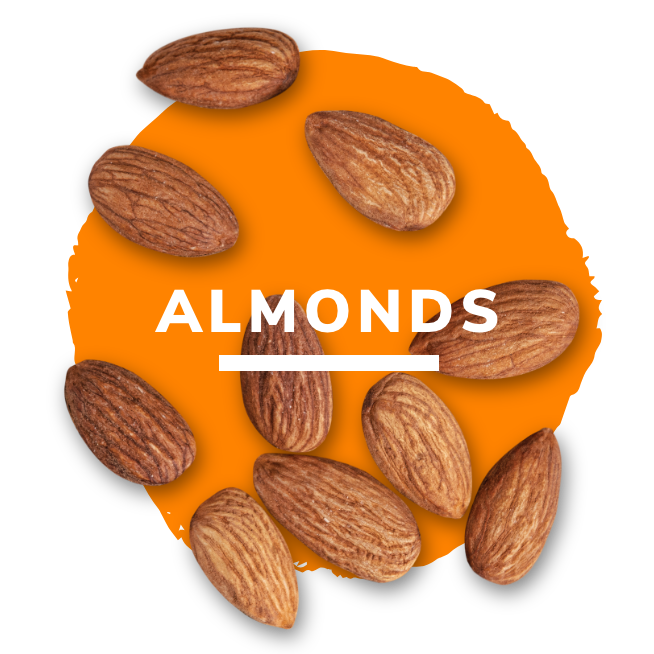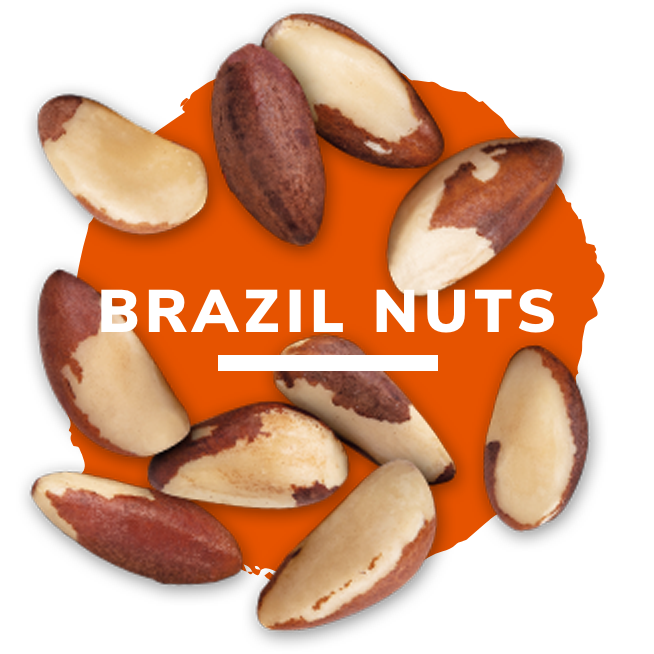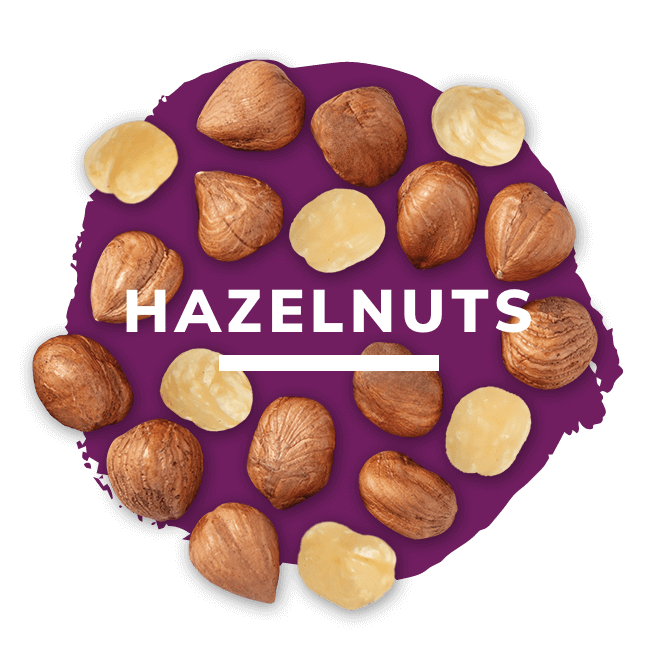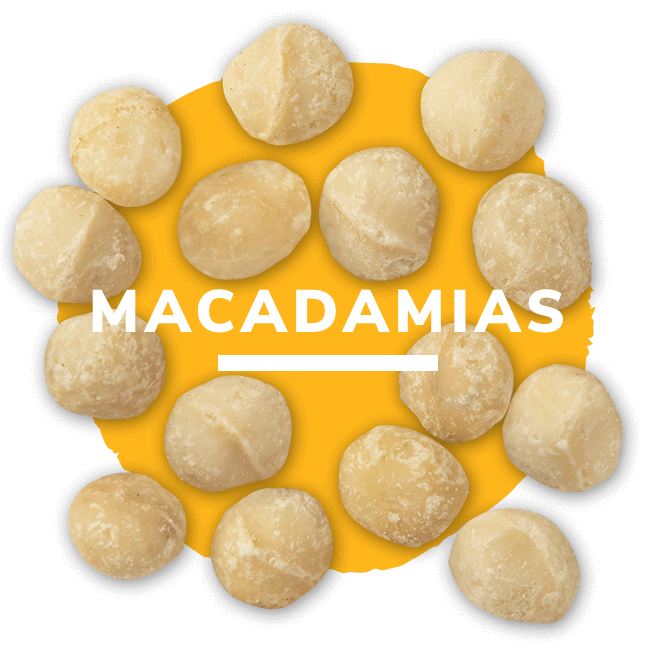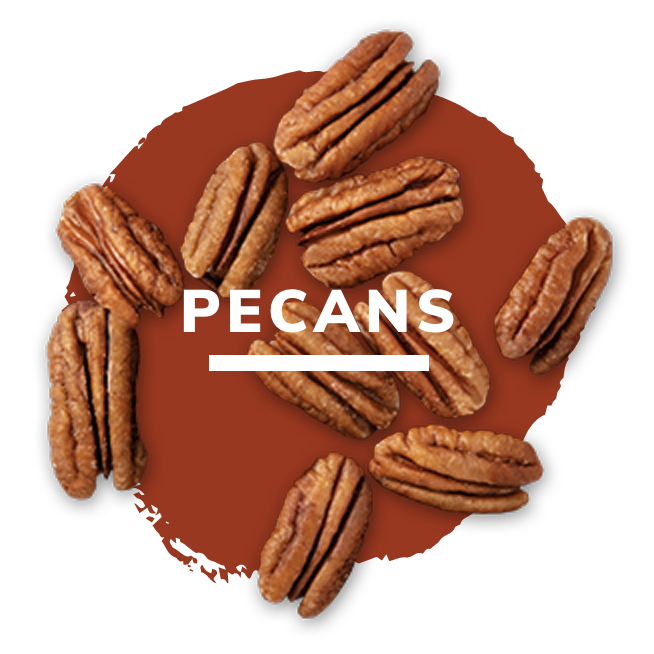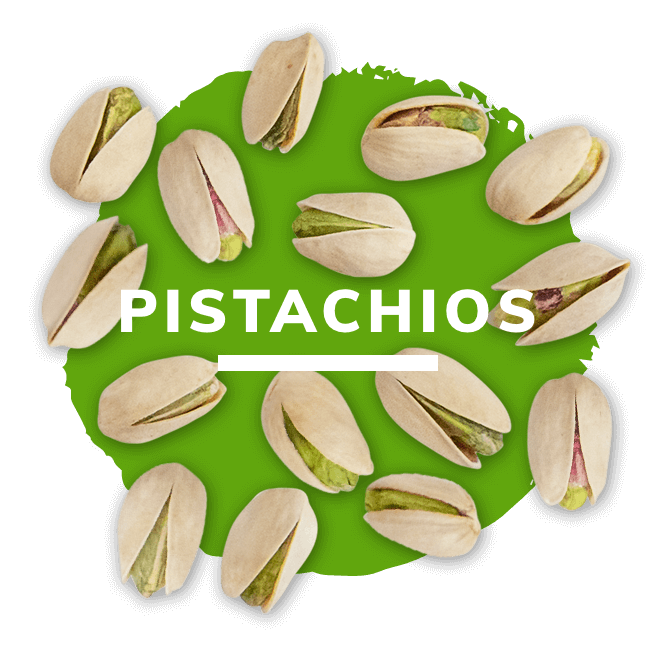Almonds

Overview
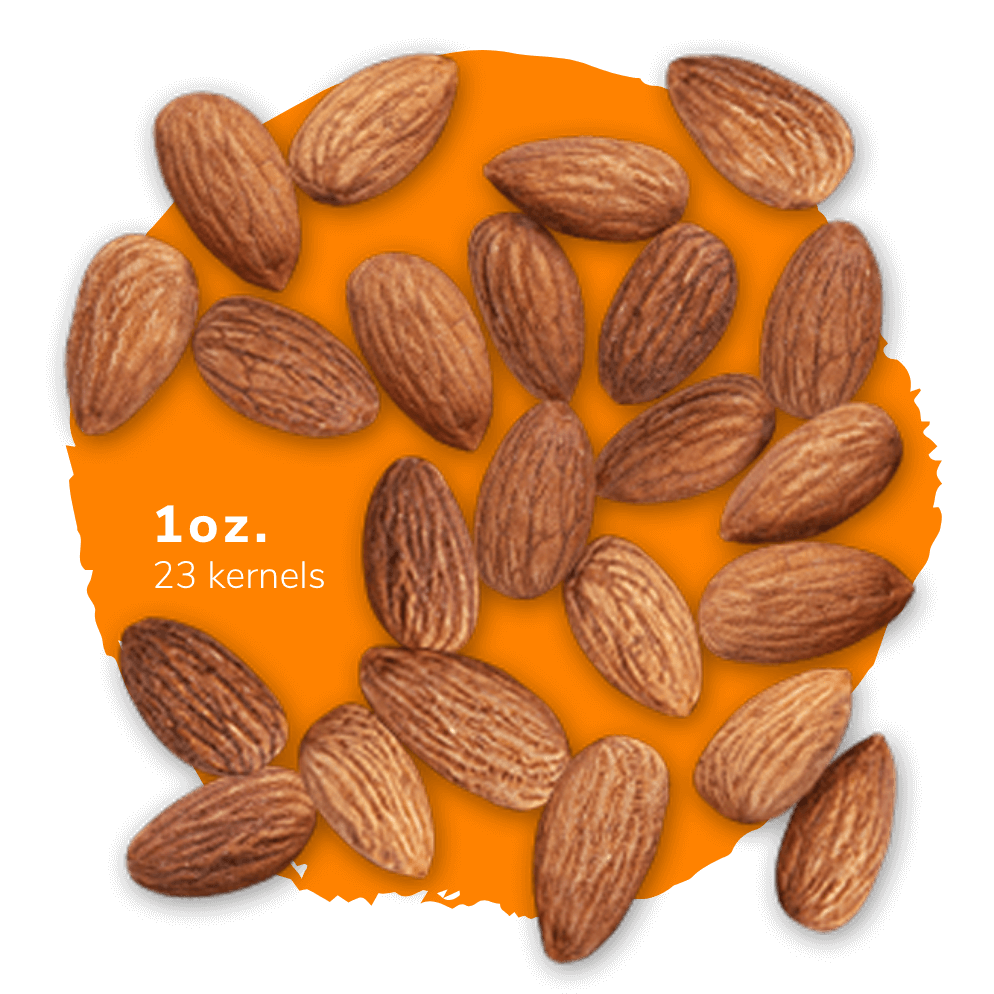
A 1-ounce serving of almonds provides:
Dietary Fiber
- Good source of fiber: 4 grams/14% of the Daily Value
Protein
- 6 grams of plant-based protein
Healthy Fats
- 14 grams of total fat: 64% is from monounsaturated fat and 25% from polyunsaturated fat
Nutrient-Dense
- Excellent source of vitamin E, copper, magnesium, manganese and riboflavin
- Good source of phosphorus
- Sodium-free
Looking for tips and tricks?
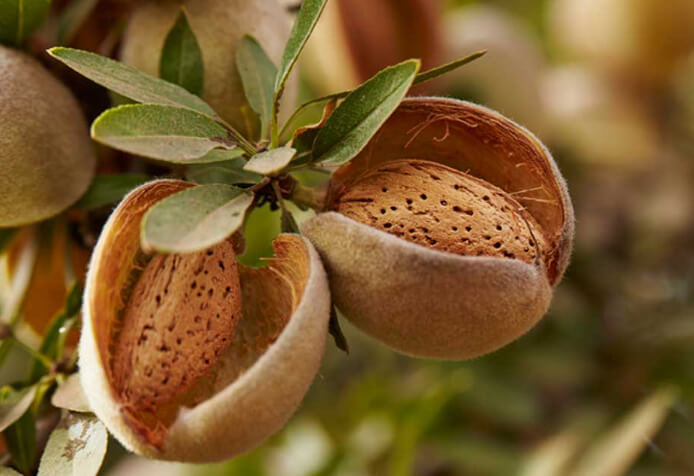
Almond hull split
ALMOND NUTRITION FACTS
Serving Size: 1 oz. (28.35g) Approx 23 kernels**
Amount Per Serving
- Calories160
% Daily Value*
- Total Fat 14g18%
- Saturated Fat 1g5%
- Polyunsaturated Fat 3.5g
- Monounsaturated Fat 9g
- Cholesterol 0mg0%
- Sodium 0mg0%
- Total Carbohydrate 6g2%
- Dietary Fiber 4g14%
- Protein 6g
- Vitamin D 0mcg0%
- Calcium 76mg6%
- Iron 1.05mg6%
- Potassium 208mg4%
- Vitamin A 3mcg0%
- Vitamin E 7.27mg50%
- Vitamin B6 0.04mg2%
- Phosphorus 136mg10%
- Vitamin C 0mg0%
- Thiamin 0.06mg4%
- Folate 12mcg4%
- Magnesium 77mg20%
- Selenium 1.2mcg2%
- Manganese 0.62mg25%
- Zinc 0.88mg8%
- Copper 0.29mg30%
*The % Daily Value (DV) tells you how much a nutrient in a serving of food contributes to a daily diet. 2,000 calories a day is used for general nutrition advice.
**Almonds are unsalted and unroasted.
History
Mentioned in everything from Greek mythology to the bible, almonds have a rich history dating back to 1400 BC. By 600-900 AD, almond orchards bloomed across Spain, Morocco, Greece, and Israel, and found their way east through the Silk Road to China. Spain maintained its almond production and they are still produced there. In the 700s AD, the almond tree was brought from Spain to California by Franciscan padres. Today, approximately 80 percent of the world’s supply is grown in the ideal Mediterranean climate of California, making almonds California’s top agricultural export and the largest U.S. specialty crop export. Almonds find their way to almond consumers in over 90 countries, but over 30% of consumption is within the U.S.
Almond orchards generally yield the first crop three years after planting and then annually for up to 25 years from planting. The annual lifecycle has many stages, with November through January marking a period of dormancy or downtime for the trees. From mid-February to mid-March, they can be seen in full bloom, across the California central valley, with white and light-pink blooms lending themselves as a picturesque backdrop. The pollinated blooms turn into the almond fruit and kernels mature and grow from March to June. During the peak of California sunshine, almond hulls split open, revealing the almond shell. After basking in plenty of California sunshine, the almonds are harvested from August through October.
Apart from imparting various health benefits, almonds are extremely versatile and can be used in several forms, from whole almonds to roasted, sliced, diced, blanched, ground, and more. Almonds are an incredibly nutrition-packed addition to healthy diets and snacks.
For more information about almonds, view our member page.
More Tree Nuts
Tree nuts are nutrient-dense whole foods that are rich in unsaturated fats and contain protein, fiber and important vitamins, minerals and phytochemicals.


